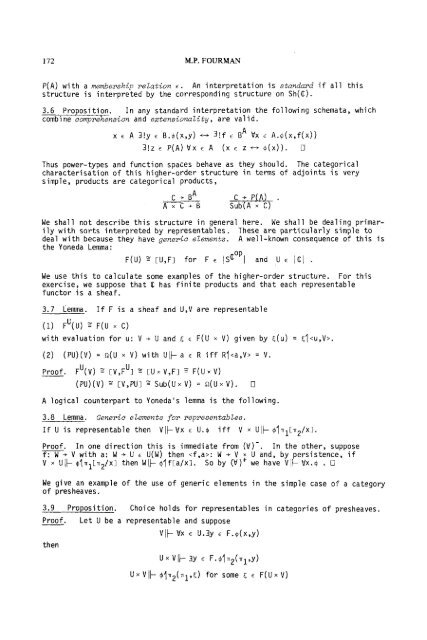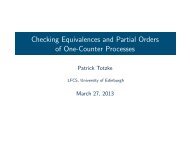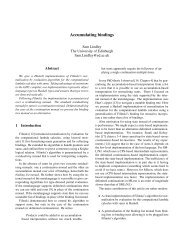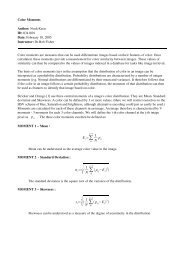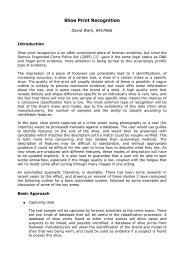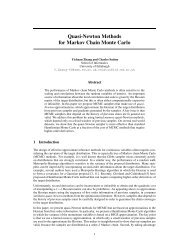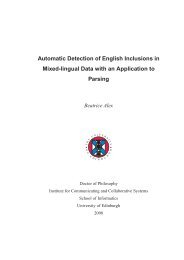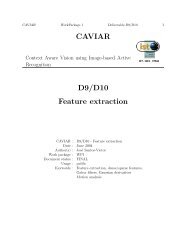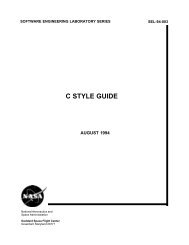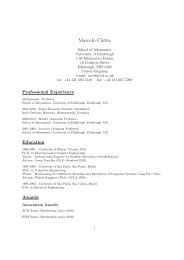Continuous Truth I Non-constructive Objects
Continuous Truth I Non-constructive Objects
Continuous Truth I Non-constructive Objects
Create successful ePaper yourself
Turn your PDF publications into a flip-book with our unique Google optimized e-Paper software.
172 M.P. FOURMAN<br />
P(A) with a membership reZation E . An interpretation is standard if all this<br />
structure is interpreted by the corresponding structure on Sh((C).<br />
3.6 Proposition. In any standard interpretation the following schemata, which<br />
combine comprehension and extensionality, are valid.<br />
A<br />
x E A 3!y E B.@(x,y) - 3 !f E B WX E A.$(x,f(x))<br />
3!z E P(A) W X E A (X E z ++ @(x)). 0<br />
Thus power-types and function spaces behave as they should. The categorical<br />
characterisation of this higher-order structure in terms of adjoints is very<br />
simple, products are categorical products,<br />
We shall not describe this structure in general here. We shall be dealing primarily<br />
with sorts interpreted by representables. These are particularly simple to<br />
deal with because they have generic elements. A well-known consequence of this is<br />
the Yoneda Lemma:<br />
OP<br />
F(U) [U,FI for F E ISc I and U E /cC1 .<br />
We use this to calculate some examples of the higher-order structure. For this<br />
exercise, we suppose that ci: has finite products and that each representable<br />
functor is a sheaf.<br />
3.7 Lemma.<br />
If F is a sheaf and U,V<br />
are representable<br />
(1) F'(U) F(U x C)<br />
with evaluation for u: V + U and E E F(U x V) given by ~ ( u ) = sI.<br />
(2) (PU)(V) = n(U x V) with Ulka E R iff Rl = V.<br />
U<br />
Proof. F (V)<br />
U<br />
[V,F 1 [UxV,FI 2 F(UxV)<br />
(PU)(V) CV,PUI Sub(UxV) = 6?(UxV). 0<br />
A logical counterpart to Yoneda's lemma is the following.<br />
3.8 Lemma. Generic elements for representables.<br />
If U is representable then VIkWx E U.$ iff V x Ulk $IT~[T~/XI.<br />
Proof. In one direction this is immediate from In the other, suppose<br />
-+ V with a: W + U E U(W) then cf,a>: W + V x U and, by persistence, if<br />
V x U(k $fn1C.rr2/xl then WIk $lf[a/xl.<br />
We give an example of the use of generic elements in the simple case of a category<br />
of presheaves.<br />
3.9 Proposition. Choice holds for representables in categories of presheaves.<br />
Proof.<br />
then<br />
Let U be a representable and suppose<br />
Vlk WX E u.3~ E F.@(x,y)<br />
UX VIk 3~<br />
So by (W)' we have V[k Wx.$ . 0<br />
F.$IT~(T~,Y)<br />
UxVlk $ 1 ~ ~ ( . r r ~ , C for ) some 6 E<br />
F(UxV)


